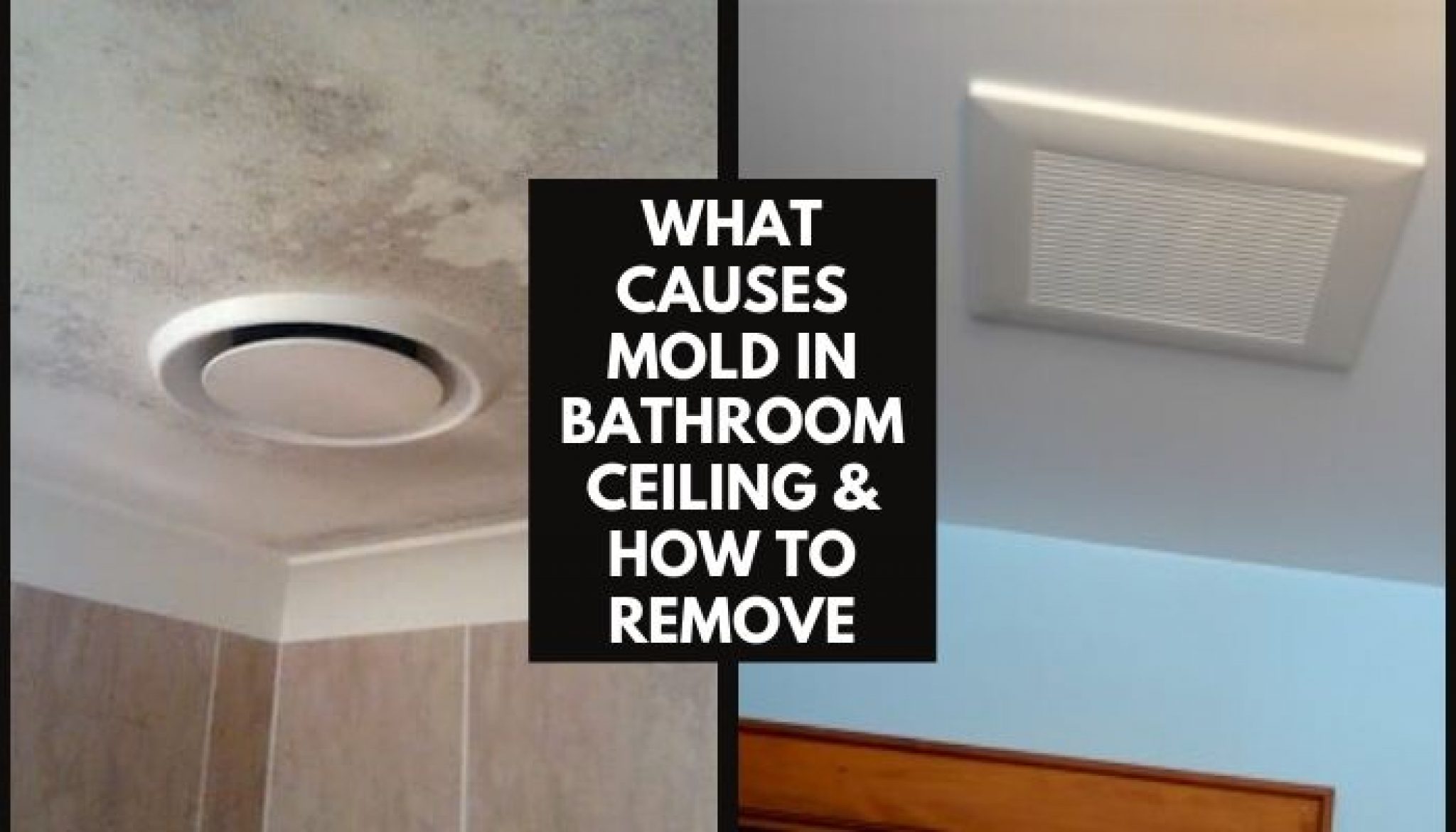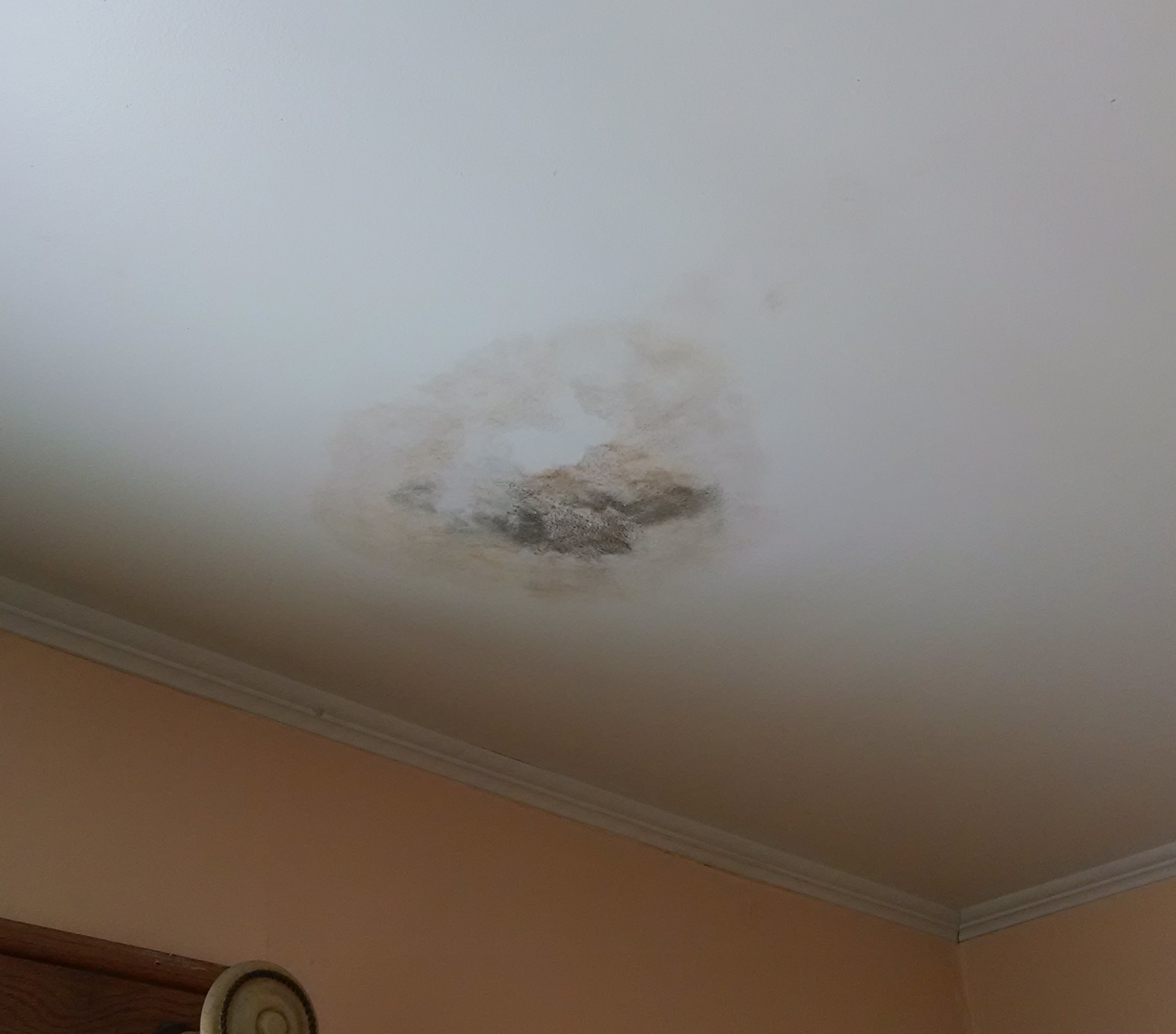Understanding the Problem

Mold growth on bathroom ceilings is a common issue that can be unsightly and pose health risks. Understanding the causes and contributing factors is essential for effective prevention and remediation.
Causes of Mold Growth
Mold thrives in damp environments with moisture and organic matter. In bathrooms, several factors contribute to mold growth on ceilings:
- Poor Ventilation: Bathrooms often lack adequate ventilation, allowing moisture from showers and baths to accumulate, creating a favorable environment for mold growth.
- Leaky Plumbing: Leaks in pipes, faucets, or showerheads can lead to persistent moisture, providing a constant source of water for mold.
- Condensation: Warm, moist air from showers and baths can condense on cool surfaces like bathroom ceilings, creating a breeding ground for mold.
- High Humidity: Bathrooms naturally have high humidity levels due to frequent water use, which encourages mold growth.
Health Risks of Mold Exposure
Mold exposure can pose various health risks, especially for individuals with allergies or respiratory problems.
- Allergic Reactions: Mold spores can trigger allergic reactions, causing symptoms like sneezing, runny nose, itchy eyes, and skin irritation.
- Respiratory Problems: Mold exposure can worsen existing respiratory conditions like asthma and bronchitis, and in some cases, can cause new respiratory problems.
- Other Health Issues: Some molds produce toxins that can cause more serious health problems, including headaches, fatigue, and neurological issues.
Preparing for the Painting Process
:max_bytes(150000):strip_icc()/GettyImages-469903840-5e6f392408f24eeaa0fcc7a19e633f8d.jpg)
Before you start painting, it’s crucial to prepare the bathroom thoroughly. This includes gathering the right materials, taking safety precautions, and ensuring the surface is clean and ready for paint.
Materials and Tools
A well-equipped toolbox is essential for a successful painting project. Here’s a list of materials and tools you’ll need:
- Paint: Choose a mildew-resistant paint specifically designed for bathrooms. Look for paints labeled as “mold and mildew resistant” or “bathroom paint”.
- Primer: Use a mildew-resistant primer to create a smooth, even surface for the paint to adhere to.
- Paintbrushes: Select brushes of different sizes for various areas of the ceiling.
- Paint roller: A roller is ideal for covering large areas quickly and efficiently.
- Paint tray: Use a paint tray to hold the paint and roller.
- Drop cloths: Protect your floors and furniture from paint splatters.
- Painter’s tape: Mask off areas you don’t want to paint, such as walls, trim, or fixtures.
- Safety glasses: Protect your eyes from paint splatters.
- Gloves: Protect your hands from paint and cleaning solutions.
- Dust mask: Prevent inhaling dust and mold spores during cleaning and painting.
- Ladder: Safely access the ceiling for painting.
- Cleaning supplies: You’ll need a cleaning solution specifically designed for killing mold and mildew, a scrub brush, a sponge, and a bucket.
- Personal protective equipment (PPE): This includes gloves, a mask, and eye protection to prevent exposure to mold and chemicals.
Preparing the Bathroom
Before you begin painting, take the following steps to prepare the bathroom:
- Clear the area: Remove all furniture, fixtures, and personal belongings from the bathroom.
- Cover the floor: Protect your floors with drop cloths to prevent paint splatters.
- Turn off the power: Disconnect the power supply to any electrical fixtures in the bathroom, such as lights and fans.
- Ventilate the bathroom: Open windows and doors to improve ventilation.
- Wear protective gear: Don safety glasses, gloves, and a dust mask to protect yourself from mold spores and paint fumes.
Removing Existing Mold and Cleaning the Surface
Mold removal is crucial before painting. It prevents the mold from spreading and ensures a clean surface for the paint to adhere to. Here’s how to do it:
- Scrape off loose mold: Use a scraper or putty knife to remove any loose mold from the ceiling.
- Apply a mold-killing solution: Use a cleaning solution specifically designed for killing mold and mildew. Follow the instructions on the product label carefully.
- Scrub the surface: Use a scrub brush to thoroughly clean the mold-affected area.
- Rinse the surface: Rinse the surface with clean water to remove any remaining cleaning solution.
- Dry the surface: Allow the ceiling to dry completely before proceeding to the next step.
Painting the Bathroom Ceiling: How To Paint Mouldy Bathroom Ceiling

Now that you’ve tackled the preparation, it’s time to get your hands dirty, literally! This section guides you through the actual painting process, ensuring a smooth, even finish that will stand the test of time.
Selecting the Right Paint
Choosing the right paint is crucial for a bathroom ceiling, as it needs to withstand moisture, resist mold growth, and look great.
- Acrylic latex paint is a popular choice for bathroom ceilings. It dries quickly, cleans up easily with soap and water, and offers good moisture resistance. Look for paints labeled “mildew-resistant” or “anti-fungal” for extra protection.
- Epoxy paint provides even greater moisture resistance and durability, making it ideal for high-traffic areas or bathrooms prone to excessive moisture. However, it’s typically more expensive and requires proper ventilation during application.
- Oil-based paint offers excellent durability and moisture resistance but takes longer to dry and requires mineral spirits for cleanup. It’s generally not the best choice for bathrooms due to the strong odor and longer drying time.
Applying the Paint
With your chosen paint in hand, you’re ready to transform your bathroom ceiling.
- Start by using a brush to paint the edges and corners. This ensures a clean and precise application in these hard-to-reach areas.
- Next, use a roller to cover the main portion of the ceiling. A 9-inch roller is ideal for most bathroom ceilings. Load the roller with paint, but don’t overload it. Too much paint can lead to drips and an uneven finish.
- Apply the paint in smooth, even strokes, working in sections. Overlap each stroke by about half the width of the roller to ensure complete coverage.
- Use a light touch to avoid creating roller marks. Apply thin coats, allowing each coat to dry completely before applying the next. Two thin coats are generally better than one thick coat.
- If you’re dealing with mold stains, you may need to apply a primer first. This helps to seal the stains and prevent them from bleeding through the paint. Use a primer specifically designed for mold and mildew.
- For a professional finish, consider using a paint sprayer. This method allows for quick and even coverage, especially on large ceilings. However, it requires more setup and cleanup.
Painting Techniques for a Smooth Finish, How to paint mouldy bathroom ceiling
To achieve a smooth and even finish, follow these tips:
- Use a high-quality roller cover. A good roller cover will leave a smooth finish without shedding fibers.
- Keep the roller wet with paint. A dry roller can leave streaks and an uneven finish.
- Apply the paint in a consistent direction. This will help to create a uniform look.
- Work quickly but carefully. Don’t let the paint dry on the roller before applying it to the ceiling.
- Avoid applying too much pressure. This can cause the paint to become uneven and leave streaks.
